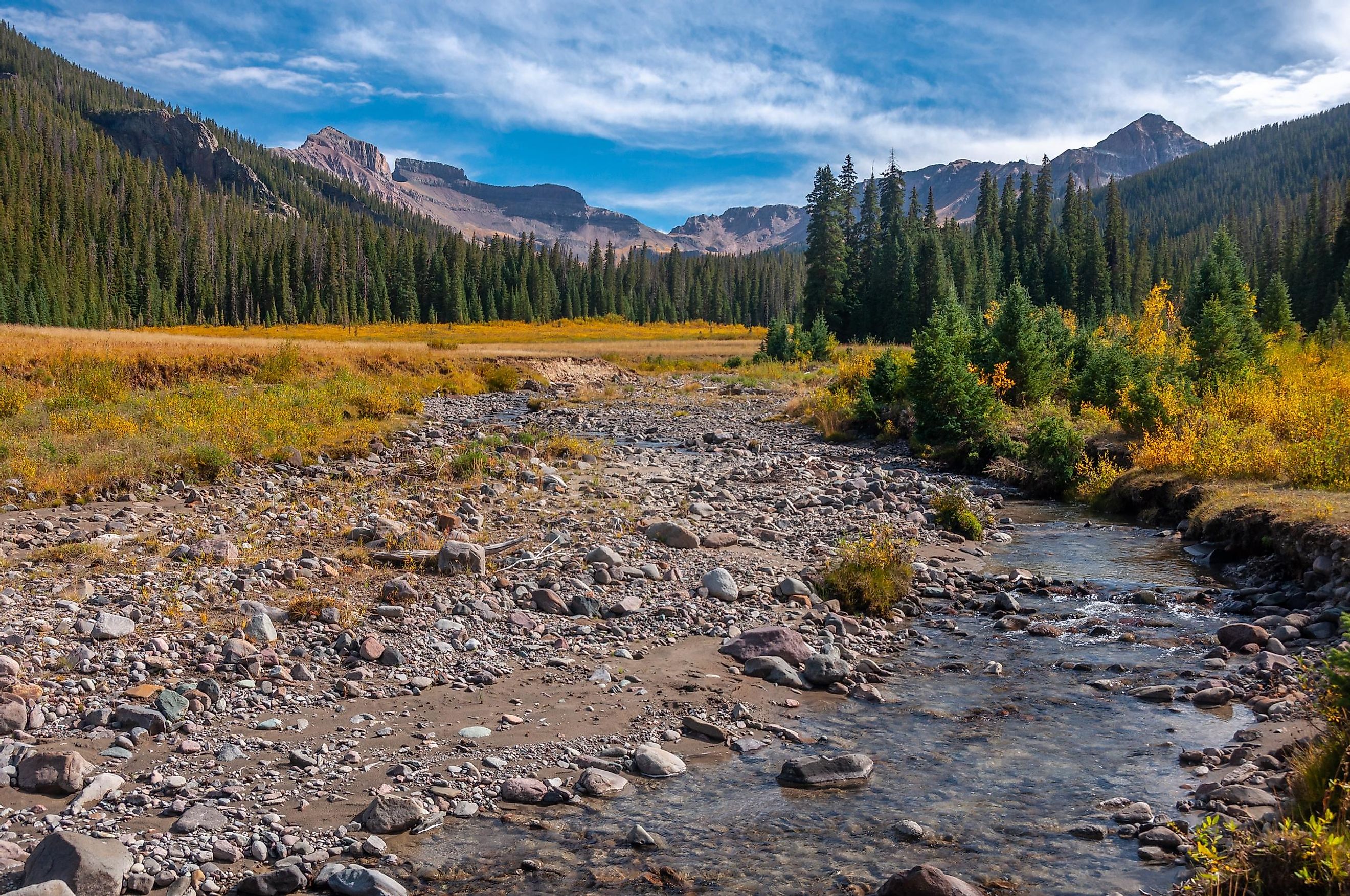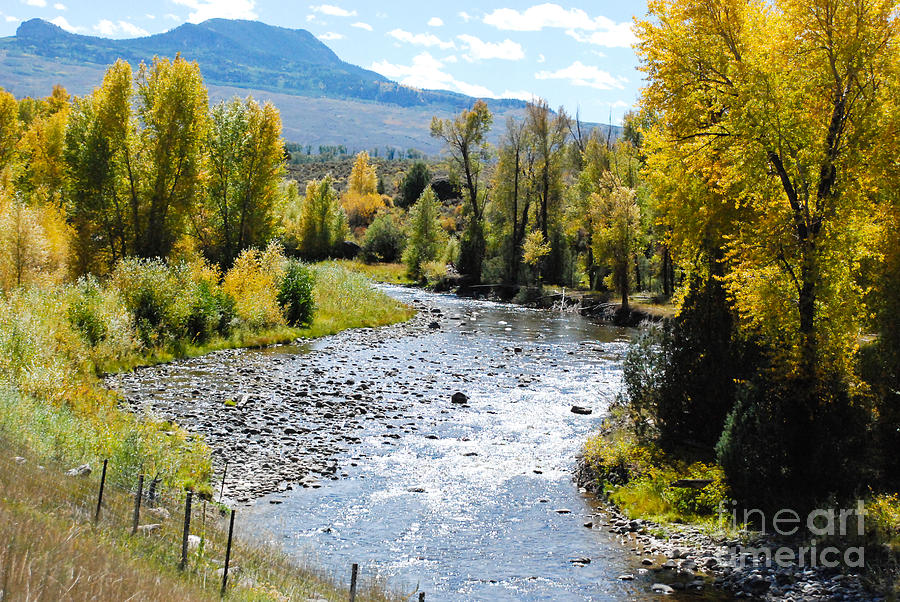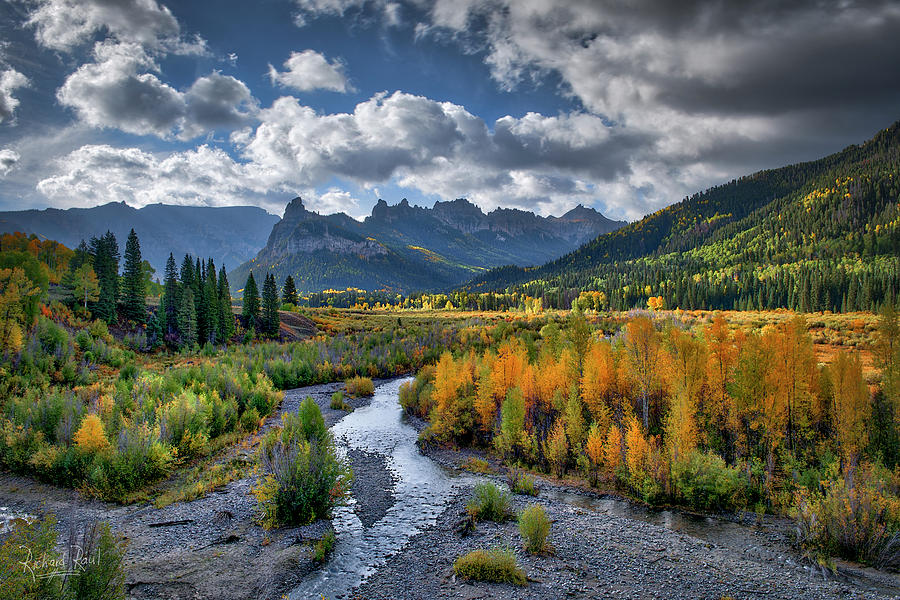
The Unruly Heart of the Plains: A Journey Along the Cimarron River
Few rivers embody the untamed, often contradictory spirit of the American West quite like the Cimarron. Its very name, derived from the Spanish word meaning "wild" or "untamed," is a promise and a warning, perfectly encapsulating a waterway that can be a life-giving artery one moment and a treacherous, disappearing phantom the next. Stretching over 698 miles from the high plains of northeastern New Mexico, through the parched lands of the Oklahoma Panhandle, and into the heart of Kansas and ultimately Oklahoma proper, the Cimarron River is a testament to resilience, a living chronicle of history, and a stark reminder of nature’s formidable power.
From its humble beginnings near the Capulin Volcano in the rugged Sangre de Cristo Mountains foothills, the Cimarron embarks on a journey that is anything but linear. It is a river of sand, of shifting channels, of sudden floods and prolonged droughts, often flowing underground for miles before resurfacing. This capricious nature has shaped not only the landscapes it traverses but also the lives of every creature and culture that has sought sustenance or passage along its banks.
A Ribbon of History: The Santa Fe Trail and No Man’s Land

The Cimarron’s historical significance is deeply etched into the annals of westward expansion. For early American traders and settlers heading to Santa Fe in the 19th century, the river presented a formidable choice: the longer, safer Mountain Route or the perilous, but shorter, Cimarron Cutoff. The Cimarron Cutoff, though it shaved days off the journey, was a gamble against the elements. Water was scarce and unreliable, often only found in stagnant pools or by digging in the sandy riverbed. Quicksand was a constant threat, capable of swallowing wagons and livestock whole.
"The Cimarron," wrote Josiah Gregg, a prolific chronicler of the Santa Fe Trail in the 1830s, "is generally without a running current, presenting a bed of sand, in which water is only found in occasional pools, or by digging in the sand. It is in this part of the journey that the traveler is most liable to suffer from thirst." This stark reality made the Cimarron a landscape of both desperation and triumph, where fortunes were made or lost, and lives were frequently on the line. The route’s dangers were amplified by the presence of indigenous tribes – the Comanche, Kiowa, and Apache – who viewed the encroaching wagon trains as an invasion of their ancestral hunting grounds. Encounters, often violent, were common, adding another layer of peril to an already arduous journey.
Further downstream, the Cimarron played a pivotal role in defining one of the most unique geographical anomalies in American history: the Cimarron Strip, also known as "No Man’s Land." This 34.5-mile-wide strip of land, sandwiched between Kansas, Colorado, New Mexico, and Texas, was not legally part of any state or territory after the Texas Annexation in 1845 and before Oklahoma statehood in 1907. For decades, it existed in a legal limbo, attracting outlaws, squatters, and those seeking to escape the reach of the law. The Cimarron River, running through the heart of this lawless territory, became a silent witness to cattle rustling, land disputes, and the raw, unbridled struggle for survival on the frontier.
Ecology of Extremes: Life in a Volatile Landscape
The Cimarron’s erratic nature has forged a unique ecosystem, home to species specifically adapted to its boom-and-bust cycles. When the river flows, it teems with life. Shallow, braided channels provide habitat for small, hardy fish like the Arkansas River shiner and plains minnow, species capable of rapidly reproducing and surviving in isolated pools during dry spells. The cottonwood trees that line its banks are sentinels of water, their deep roots tapping into the subterranean flow, providing shade and shelter for countless birds and mammals.
Birdlife along the Cimarron is particularly diverse. The endangered Interior Least Tern nests on its sandy banks, while migratory waterfowl find refuge in its wetlands during their long journeys. Deer, coyotes, bobcats, and even the occasional badger roam its riparian corridors, drawn to the cover and the promise of water. Yet, this delicate balance is constantly challenged by the river’s inherent volatility. Extreme weather events, such as the devastating floods of 1957 or the prolonged droughts of the Dust Bowl era and more recently, drastically alter the landscape, testing the resilience of its inhabitants.
"The Cimarron teaches you humility," observes Sarah Jensen, a wildlife biologist working in western Oklahoma. "It’s a beautiful, harsh place. You see life thriving in conditions that would break other ecosystems. But it’s a constant struggle, a testament to how adaptable nature truly is when given half a chance."
Modern Challenges and the Quest for Balance

Today, the Cimarron faces a new set of challenges, predominantly human-induced. Agriculture, the lifeblood of many communities along its course, places immense demands on its water resources. Irrigation for crops like wheat, corn, and alfalfa draws heavily from both the river’s surface flow and the underlying Ogallala Aquifer, which is intrinsically linked to the river’s health. Oil and gas exploration, another major industry in the region, also impacts water quality and quantity, with concerns about runoff and the effects of fracking on groundwater.
Furthermore, the introduction of invasive species, such as saltcedar (Tamarisk), poses a significant threat. This non-native shrub, with its deep roots and high water consumption, outcompetes native vegetation, alters riparian habitats, and exacerbates water scarcity during dry periods. Managing these competing demands and mitigating environmental impacts requires a delicate balance of conservation efforts, sustainable land management practices, and policy innovation.
Local conservation groups and state agencies are working to address these issues. Projects focus on restoring native plant communities, controlling invasive species, and promoting water-efficient farming techniques. Education is key, raising awareness among landowners and the public about the river’s ecological value and the importance of its preservation.
The Enduring Spirit of Wildness
Despite the pressures, the Cimarron River retains an undeniable allure. Its raw, unfiltered beauty draws adventurers, naturalists, and those simply seeking solace in its vast, open spaces. Kayakers navigate its more reliable sections, anglers cast for catfish and carp, and hikers explore its sandy banks and sparse woodlands. The silence of the Cimarron, broken only by the whisper of the wind through the tall grasses or the call of a hawk circling overhead, offers a profound connection to the unvarnished spirit of the American West.
It is a river that defies easy categorization. It is not the mighty Mississippi, nor the majestic Colorado. The Cimarron is a river of paradoxes: both a boundary and a pathway, a source of life and a bringer of peril, a vibrant ecosystem and a fragile resource. Its erratic flow is a constant reminder that nature, even when seemingly subdued by human intervention, retains an inherent wildness that cannot be fully tamed.
In the end, the Cimarron River is more than just a hydrological feature; it is a living metaphor for resilience and the enduring power of the natural world. It whispers tales of buffalo herds and wagon trains, of outlaws and pioneers, of droughts and floods, all while carving its own unpredictable path across the vast American plains. To truly understand the heart of this landscape, one must simply stand on its sandy banks, listen to the wind, and witness the untamed spirit of the Cimarron flowing – or disappearing – before their very eyes. It is, and always will be, a wild river.


